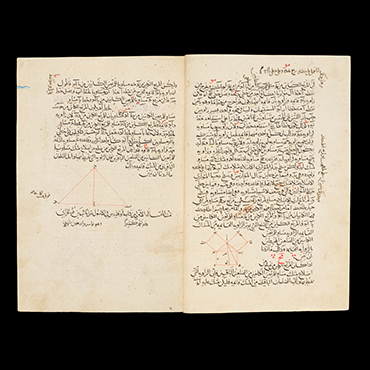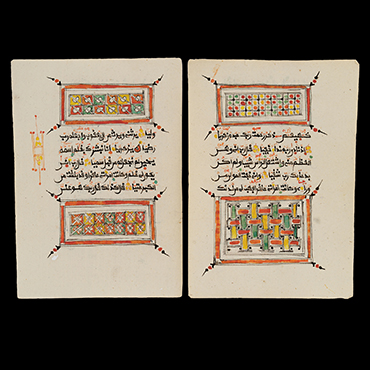The King Abdulaziz Waqf Libraries Assembly (KAWLA) was established by Cabinet Decision
No. 389 on Ramadan 15, 1437 AH/June 20, 2016 CE. Chaired by His Royal Highness the Governor of Al-Madinah al-Munawwarah, the Board of Trustees oversees the complex and is linked to the President of the Council of Ministers.
KAWLA’s mission is to preserve waqf libraries, provide services, and ensure public access. It raises awareness of the importance of manuscripts, promotes Arab and Islamic heritage, and develops preservation strategies. Additionally, KAWLA seeks partnerships to strengthen heritage preservation, enhancing scientific research and creating digital databases to assist individuals and organizations.
Among Madinah’s cultural and historical treasures, KAWLA has emerged as a key repository for rare manuscripts. It brings together over sixty waqf libraries dedicated to preserving this rich heritage for future generations, housing numerous manuscripts from various periods that reflect a priceless cultural and scientific legacy.

The KAWLA collection contains hundreds of Qur’an manuscripts from many different parts of the Muslim world. Those selected here illustrate some of the ways numbering systems have been introduced into the copying of the holy text. This includes visual markings for groups of five and ten verses, as well as divisions that facilitate the reading or memorization of the Holy Qur’an in measured parts, such as fourths or eighths, or over specific periods of time, such as a week or a month. These sections are sometimes bound into separate volumes or indicated in single-volume Qur’ans with illuminations in the margins.
Folios from a Qur’an manuscript (19: 1–9)
This manuscript is typical of Qur’ans produced in the central and western Sahel region of Africa in the late 12th to 13th centuries AH/18th to 19th centuries CE; more specifically, the script and decorative style of this copy are associated with the Bornu region around Lake Chad, which was a center of scholarship and manuscript production in that period. In it, single verse divisions are marked within the text with a trefoil device of three yellow dots, fifth verses are marked with an orange device in the form of the letter ha’, which represents the number 5 in the abjad system, and tenth verses are indicated with a double-ringed roundel in colors. In the margins, each eighth of a hizb is marked with a device consisting of a square with long parallel vertical lines on either side and two triangular arrangements of yellow dots on the upper and lower sides, and each full hizb is marked with a large colored roundel. The opening of the text and the double pages coinciding with the beginning of the second, third and fourth quarters are decorated with rectangular panels filled with grids of colored dots, strapwork, and quasi-geometric designs in red ochre, yellow, green, and black (visible here).
Sahel region, probably northern Nigeria
13th century AH/19th century CE, Sudani script
Ink and opaque pigments on paper, h. 22.3 × w. 15.7 cm
King Abdulaziz Waqf Libraries Assembly, Al-Madinah al-Munawwarah, no. 1130

